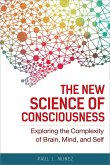The book addresses the issue of the human relationship with diversity within a theoretical framework that considers not only the psycho-social perspective, but also - and pre-eminently - the perspective of complexity science. A broad definition of diversity is proposed, whereby diversity is all that is not the self or, more precisely, all that is not the present self. There is a focus on cross-cultural relations, especially with regards to young people, and on the themes of racism and empathy in this context. The analysis draws on the considerable data obtained by the author and her research group in her study of children's and adolescents' attitudes towards multiculturalism. Interspecies diversity is considered as well, with a chapter devoted to the human relationship with animals supported by data obtained from the author's research study on children's and adolescents' attitudes towards animals. Throughout the book, the main concepts and principles pertaining to complexity science and complex thinking are used, including systems, interconnection, emergent factors, non-linearity, uncertainty, responsibility, mutilating thought, and the contribution of art to scientific research. Two chapters address the relationship with diversity as it is presented in literature, cinema, and photography. In conclusion, the author's view is that complexity is an intrinsic quality of reality, and that reality absolutely must be approached through the complexity lens.








